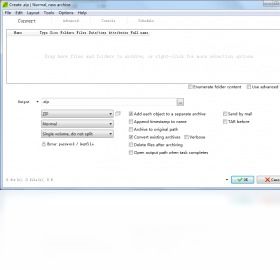您所在的位置:首页 - 科普 - 正文科普
pea化学式
![]() 楚皓
2024-04-21
【科普】
124人已围观
楚皓
2024-04-21
【科普】
124人已围观
摘要**Title:ExploringPEAProgramming:AComprehensiveOverview**Peaprogramming,alsoknownasParallelExplicitAl
Title: Exploring PEA Programming: A Comprehensive Overview
Pea programming, also known as Parallel Explicit Algorithms programming, represents a fascinating domain within the realm of parallel computing. It involves designing algorithms and implementing them using parallel computing techniques to enhance performance and efficiency. Let's delve into the world of PEA programming to understand its concepts, applications, and potential benefits.
Understanding PEA Programming:
1. Concepts and Principles:
Pea programming revolves around the concept of paralleli***, where tasks are divided into ***aller subtasks that can be executed simultaneously on multiple processing units. It emphasizes explicit paralleli***, where the programmer explicitly specifies parallel execution through constructs or directives.
2. Key Components:
Task Decomposition:
Breaking down a problem into ***aller tasks that can be executed independently.
Parallelization:
Assigning tasks to different processing units for simultaneous execution.
Synchronization:
Coordinating the execution of parallel tasks to ensure correct results.
Communication:
Facilitating data exchange between parallel tasks when necessary. 3. Programming Models:

Shared Memory:
Threads communicate through shared memory regions.
Message Passing:
Processes communicate by sending messages via communication channels.
Data Paralleli***:
Operations are applied simultaneously to different data elements.Applications of PEA Programming:
1. HighPerformance Computing (HPC):
PEA programming is extensively used in HPC applications such as scientific simulations, weather forecasting, and computational fluid dynamics. Paralleli*** enables faster computations, allowing scientists and researchers to tackle complex problems more efficiently.
2. Big Data Processing:
In the realm of big data ***ytics, PEA programming plays a crucial role in processing vast amounts of data in parallel. Technologies like Apache Hadoop and Apache Spark leverage paralleli*** to distribute data processing tasks across a cluster of machines.
3. Machine Learning and AI:
Paralleli*** is instrumental in accelerating training processes for machine learning models. Frameworks like TensorFlow and PyTorch utilize PEA programming techniques to distribute computations across multiple GPUs or CPUs, reducing training time significantly.
Benefits of PEA Programming:
1. Improved Performance:
By harnessing the power of parallel computing, PEA programming leads to significant performance enhancements, enabling faster execution of tasks and algorithms.
2. Scalability:
PEA programming allows systems to scale efficiently as the workload increases. Parallel execution ensures that additional resources contribute to improved throughput without sacrificing performance.
3. Resource Utilization:
Paralleli*** maximizes resource utilization by effectively utilizing available processing units, whether it's multicore CPUs, GPUs, or distributed computing clusters.
4. Enhanced Productivity:
Developers can focus on algorithmic design and let the underlying parallel computing framework handle the intricacies of parallel execution. This abstraction boosts productivity and simplifies the development process.
Challenges and Considerations:
1. Complexity:
Designing and implementing parallel algorithms can be complex and errorprone, requiring careful consideration of synchronization, communication, and load balancing.
2. Overhead:
Paralleli*** introduces overhead in terms of synchronization, communication, and data transfer, which may impact overall performance if not managed effectively.
3. Debugging and Testing:
Debugging parallel programs can be challenging due to nondeterministic behavior and race conditions. Comprehensive testing methodologies are essential to ensure correctness and reliability.
Conclusion:
Pea programming offers a powerful paradigm for leveraging parallel computing to address the everincreasing demands of modern computing tasks. By understanding its principles, applications, and benefits, developers can harness the full potential of paralleli*** to unlock new levels of performance and efficiency in various domains, from scientific research to big data ***ytics and artificial intelligence. However, overcoming the challenges associated with parallel programming requires careful planning, rigorous testing, and continuous optimization to realize its full benefits.
Tags: pe编程软件 pea是什么材料 pea是什么 pea是什么意思 pea化学式
版权声明: 免责声明:本网站部分内容由用户自行上传,若侵犯了您的权益,请联系我们处理,谢谢!联系QQ:2760375052
上一篇: 诸暨电商公共服务中心
下一篇: 新能源重卡
最近发表
- 探索日本核污染水排放,现状、影响与应对策略
- 全职妈妈离婚获2万元经济补偿,揭秘背后的真相与启示
- 王琳惊艳亮相,54岁穿短裙婚纱走秀的优雅与活力
- 继续深耕中国,共创共享机遇
- 千位歌迷在刀郎演唱会现场外,音乐盛宴如梦如幻
- 渔船遇海盗袭击,3名中国人失踪,紧急救援与深入理解
- 小米试驾体验遇尴尬,雷军秒道歉引热议
- 香港歌手李国祥去世
- 音乐人因刀郎跨越西洋乐与中国音乐的奇妙转变——深度解读与启示
- 清华毕业生失踪背后的罗生门,揭开真相与寻找答案
- 韩国救山火消防员盒饭,一份充满人间温情的瞬间
- 黄金价格的终极目标,探寻价值与投资方向
- 小区惊魂,儿童车祸事故的警示与启示
- 湖南38个机关事业单位围墙全拆,开启新篇章
- 车主掉头遇红灯,后车滴滴巧应对
- 探索云南曲靖市会泽县的地震事件
- 新郎没拉裤子拉链,新娘手动闭链的浪漫婚礼
- 10岁女孩高烧去世,被诊断为7种疾病
- 拥抱与冒险,两个小孩的温馨瞬间与泥坑的奇妙旅程
- 女厅官落马后,下属被查风波掀起波澜
- 勇敢逆行,诠释人间大爱——关于溺亡外卖员及其家庭的故事
- 大摩小摩去年四季度疯狂买A股
- 从人去楼空歌词中读懂离别的深情与生命的哲思
- 甲亢患者学功夫之路,挑战与成长
- 九牛一毛歇后语——生活中的小智慧大道理
- 多名大陆配偶被限期离台 台各界发声
- 和巧虎一起玩躲猫猫,让孩子在游戏中学习与成长!
- 王者荣耀游戏体验优化与应对关键问题的应对策略
- 探索趣味与成长的数字乐园
- 地震的力量,缅甸与汶川地震的对比
- 畅享军事模拟游戏的无限乐趣
- 缅甸地震,灾难中的救援与应对
- 董宇辉报平安,温馨时刻
- 机战王洛洛历险记全集——一场童年的奇幻冒险之旅
- 揭开美军飞行员之怒,深入了解行为后果与安全责任
- 揭开全国重名查询系统的神秘面纱,如何轻松找到与你同名的人
- 缅甸地震中的救援行动与启示
- 揭秘你的另一个星座,探索隐藏的性格密码
- 东旭集团证券违法拟被罚17亿元
- 深入解析暗黑破坏神攻略,助你成为圣休亚瑞的传奇英雄
- 专家解读地球是否进入活跃期文章标题
- 畅玩经典——实况足球10中文版的全面解析与攻略
- 牛肉市场中的中方与美国厂商,续约与挑战
- 畅玩捕鱼达人单机版,轻松体验水下冒险的乐趣
- 王钰栋应对脚踝受伤,回应与处理
- 探索自然的灯塔——野外女教师的角色与魅力
- 华阳集团,2024年净利润增长引领行业新篇章
- 探索南美大陆的地理瑰宝
- 男子做马拉松陪跑一场收入6000元
- 69岁阿姨的退休生活,自驾游的传奇之旅文章标题及内容


